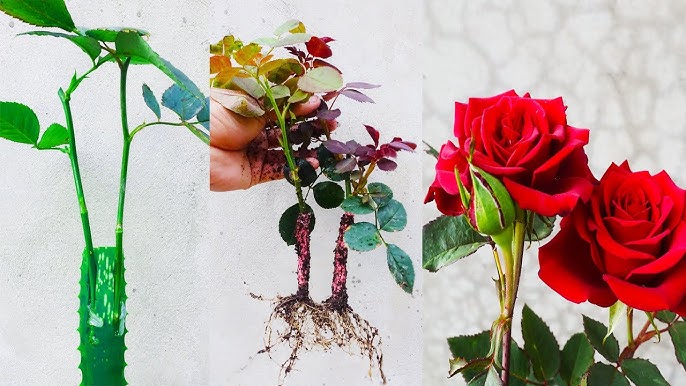If you’re looking for a simple and innovative way to propagate roses, using toilet paper as part of your process can dramatically improve success rates. This step-by-step guide will walk you through the process, ensuring healthy and thriving rose plants.
Why Toilet Paper?
Toilet paper provides an ideal medium for retaining moisture around the base of the cutting, which is crucial for root development. Its lightweight and breathable structure also prevents over-saturation, promoting healthy growth.
Step-by-Step Guide to Growing Roses with Toilet Paper
1. Select the Perfect Cutting
- Choose healthy, semi-hardwood rose cuttings measuring 15-20 cm (6-8 inches) long.
- Use sharp, sanitized pruning shears to prevent infection and ensure a clean cut.
2. Prepare the Cuttings
- Remove all leaves from the cutting to redirect energy towards root formation.
- If you want to leave a few leaves at the top, trim them in half to reduce water loss and stress on the plant.
3. Shape the Ends
- Cut the bottom of the stem at a 45° angle to increase the surface area for root growth. Trim the top end straight to prevent confusion later.

4. Wrap the Cutting in Toilet Paper
- Optionally dip the bottom end of the cutting into a rooting hormone for an added boost.
- Wrap the base of the cutting in 3-4 layers of toilet paper, covering about half its length to balance moisture retention and airflow.
5. Moisten the Wrap
- Lightly spray the toilet paper with water until it’s fully soaked, then gently squeeze out excess moisture. Be mindful of thorns while handling the cutting.
6. Prepare the Potting Medium
- Use a medium-sized pot with well-draining soil.
- Mix garden soil, compost, and river sand for an ideal growing medium that supports healthy root growth.
7. Plant the Cutting
- Insert the wrapped end of the cutting into the soil, ensuring the toilet paper-covered portion is completely buried.
- Cover 50-75% of the cutting’s height with soil to provide stability.
8. Water and Place the Pot
- Water the soil evenly to ensure consistent moisture.
- Position the pot in a location with bright, indirect light. Avoid direct sunlight, as it can dry out the cutting and slow root development.
9. Monitor Growth
- Within 2-4 weeks, you should see new leaf growth, a sign that roots are developing.
- Gently check for root formation. Once established, transplant the new rose plant to your garden or an individual pot.
Why This Method Works
The toilet paper ensures consistent moisture around the cutting’s base, which is critical for root formation. It’s an accessible, low-cost solution that maximizes success rates while minimizing effort.
By following this innovative method, you can expand your rose garden with minimal cost and effort. Whether you’re a seasoned gardener or a beginner, this technique is a game-changer for rose propagation.
Transform your garden with this easy, effective approach and enjoy the satisfaction of growing beautiful roses from scratch!
